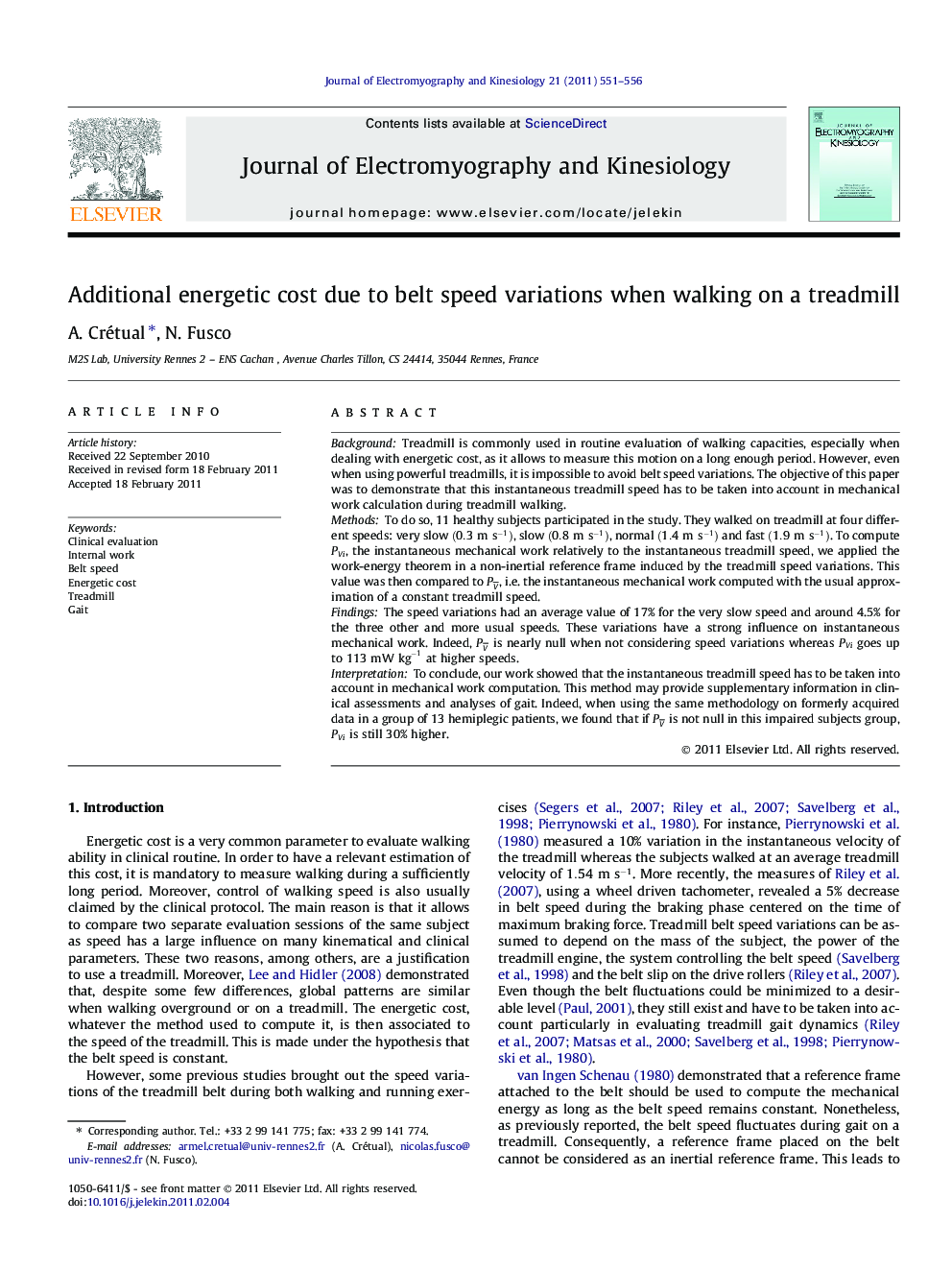| Article ID | Journal | Published Year | Pages | File Type |
|---|---|---|---|---|
| 6210620 | Journal of Electromyography and Kinesiology | 2011 | 6 Pages |
BackgroundTreadmill is commonly used in routine evaluation of walking capacities, especially when dealing with energetic cost, as it allows to measure this motion on a long enough period. However, even when using powerful treadmills, it is impossible to avoid belt speed variations. The objective of this paper was to demonstrate that this instantaneous treadmill speed has to be taken into account in mechanical work calculation during treadmill walking.MethodsTo do so, 11 healthy subjects participated in the study. They walked on treadmill at four different speeds: very slow (0.3ms-1), slow (0.8ms-1), normal (1.4ms-1) and fast (1.9ms-1). To compute PVi, the instantaneous mechanical work relatively to the instantaneous treadmill speed, we applied the work-energy theorem in a non-inertial reference frame induced by the treadmill speed variations. This value was then compared to PV¯, i.e. the instantaneous mechanical work computed with the usual approximation of a constant treadmill speed.FindingsThe speed variations had an average value of 17% for the very slow speed and around 4.5% for the three other and more usual speeds. These variations have a strong influence on instantaneous mechanical work. Indeed, PV¯ is nearly null when not considering speed variations whereas PVi goes up to 113mWkg-1 at higher speeds.InterpretationTo conclude, our work showed that the instantaneous treadmill speed has to be taken into account in mechanical work computation. This method may provide supplementary information in clinical assessments and analyses of gait. Indeed, when using the same methodology on formerly acquired data in a group of 13 hemiplegic patients, we found that if PV¯ is not null in this impaired subjects group, PVi is still 30% higher.
